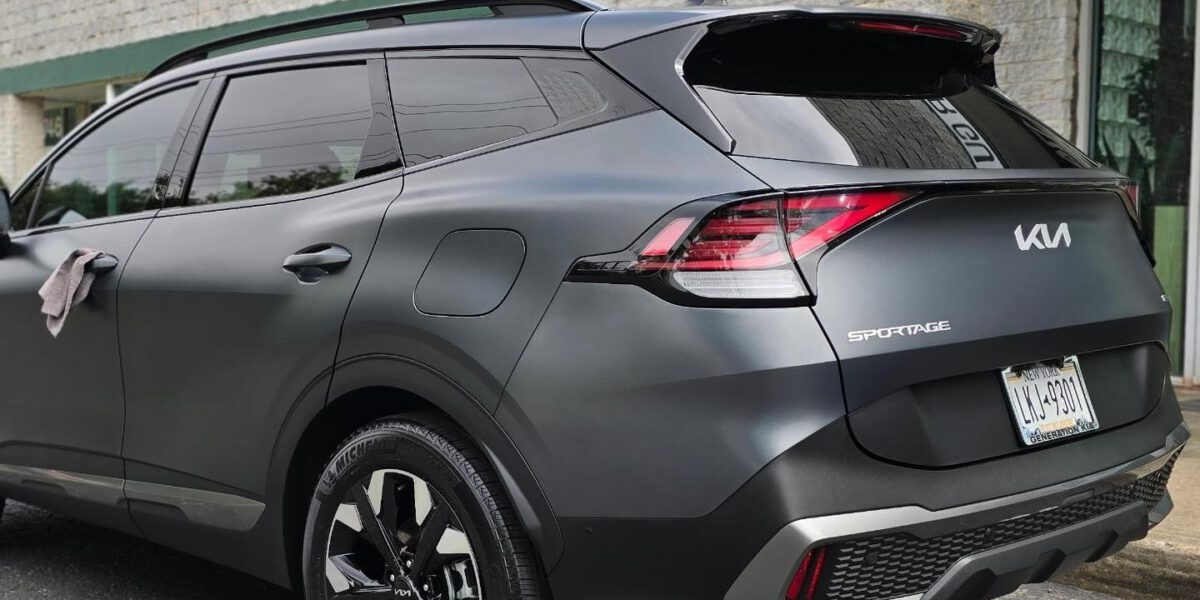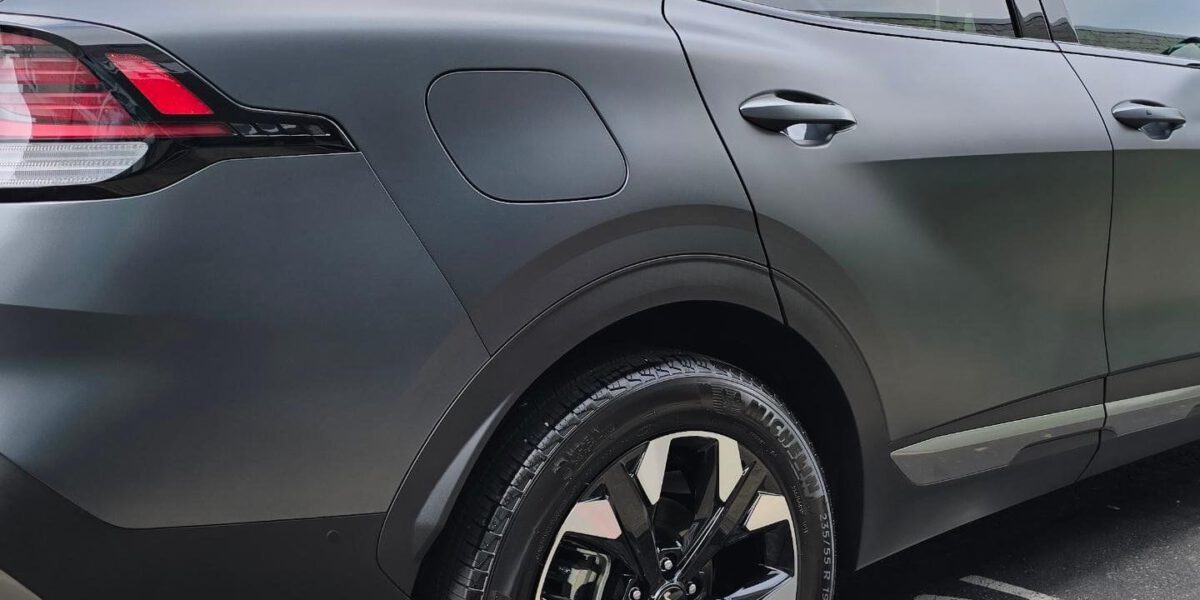Did you know that window tinting can reduce harmful UV rays entering your vehicle? Understanding the various options available can be vital in selecting the right tint for your needs. From carbon to ceramic and IR window tints, each option offers unique advantages that cater to different preferences and priorities. Before making a decision, it’s crucial to weigh the benefits of each type and consider how they align with your requirements. By exploring the nuances of these window tint options, you can make an informed choice that enhances your driving experience and protects your vehicle’s interior.

Key Takeaways
- Carbon, Ceramic, and IR tints offer varying heat rejection and UV protection levels.
- Consider budget, heat rejection, durability, and UV protection when choosing between Carbon and Ceramic tints.
- Proper installation of IR tint is crucial for optimal heat rejection and UV protection.
- Clean tinted windows gently with mild soap, and avoid harsh cleaners to maintain their appearance.
- Regular maintenance preserves IR film’s appearance and UV protection capabilities.
Benefits of Carbon Window Tint
Choosing carbon window tint for your vehicle offers many benefits beyond just enhancing its appearance. One of the significant advantages of carbon window tint is its excellent heat rejection properties. This means that during those scorching summer days, the tint works to block out a substantial amount of heat from entering your car, keeping the interior cooler and more comfortable for you and your passengers.
Carbon window tint reduces the heat entering the vehicle and lessens the strain on the air conditioning system, potentially leading to improved fuel efficiency.
In addition to heat rejection, carbon window tint provides exceptional UV protection for you and your car’s interior. Harmful UV rays from the sun can’t only damage your skin but also cause your car’s upholstery to fade over time. Carbon window tint acts as a barrier, blocking out a significant portion of these UV rays, thereby helping to preserve the interior of your vehicle.
This protection isn’t only beneficial for maintaining the aesthetics of your car but also for safeguarding your skin from the sun’s harmful effects during long drives.
Advantages of Ceramic Window Tint
What makes ceramic window tint stand out among other options for your vehicle’s windows? Ceramic window tint is a premium choice recognized for its exceptional heat rejection and UV protection properties. When it comes to maintaining your vehicle cool and shielding your skin from harmful UV rays, ceramic window tint excels in delivering superior performance.
Heat rejection is a crucial advantage of ceramic window tint. It effectively blocks a significant amount of heat from entering your vehicle, keeping the interior cooler even on the hottest days. By reducing the amount of heat that accumulates inside your car, ceramic tint enhances your driving experience by creating a more comfortable environment.
In addition to heat rejection, ceramic window tint offers outstanding UV protection. Harmful UV rays can’t only harm your skin but also cause your vehicle’s interior surfaces to fade and deteriorate over time. Ceramic tint acts as a barrier against UV rays, safeguarding both you and your vehicle’s interior from the sun’s harmful effects.
Opting for ceramic window tint guarantees that you will not only stay cool and comfortable while driving but also protect your skin and preserve your vehicle’s interior. With its advanced heat rejection and UV protection capabilities, ceramic window tint provides a high level of performance that you can depend on for a more enjoyable driving experience.
Understanding IR Window Tint
When considering IR window tint, you should know that it offers enhanced heat rejection compared to traditional tints. Understanding the benefits of IR window tint can help you make an informed decision for your vehicle or property.
Additionally, proper installation of IR window tint is vital to maximize its effectiveness in blocking infrared rays.
IR Window Tint Benefits
To fully comprehend the benefits of IR window tinting, it’s essential to understand how this specialized tint works to improve your overall comfort and protection within your vehicle or home.
IR window tint offers remarkable heat rejection properties, keeping your interior cool and pleasant even on the hottest days. By blocking a significant amount of infrared radiation, this tint helps maintain a comfortable temperature inside, reducing the need for excessive air conditioning.
Additionally, IR window tint provides excellent UV protection, safeguarding your skin and interior furnishings from the harmful effects of prolonged sun exposure. This not only enhances your driving or living experience but also contributes to the longevity of your vehicle or home’s interior components.
With IR window tint, you can enjoy a more relaxed environment while simultaneously protecting your belongings and loved ones from the sun’s damaging rays.
IR Window Tint Installation
Understanding how to properly install IR window tint is essential for maximizing its benefits and effectiveness in your vehicle or home. When installing IR window tint, make sure the surface is clean and free of any debris to prevent imperfections.
Start by measuring the windows accurately and cutting the tint film slightly larger than the window size. Next, spray the window and adhesive side of the film with a soapy water solution to help with positioning. Carefully apply the film, using a squeegee, to remove any air bubbles and excess water. Trim the edges for a precise fit and allow the tint to cure for a few days before rolling down the windows.
Proper installation of IR window tint not only enhances energy efficiency by reducing heat transfer but also provides excellent UV protection and privacy benefits. By following these installation steps, you can enjoy a cooler interior, lower energy costs, and increased comfort while driving or relaxing at home.
Comparison: Carbon Vs. Ceramic
For those in search of a high-performance window tint, understanding the disparities between carbon and ceramic options is crucial. Let’s explore the comparison between these two popular choices.
Commencing with cost, carbon window tint is generally more budget-friendly than ceramic tint. Nevertheless, when it comes to heat rejection, ceramic window tint takes the lead. Ceramic tint can block more heat compared to carbon tint, making it a superior option for those residing in warm climates or seeking maximum heat reduction.
Regarding durability, ceramic window tint outshines carbon tint. Ceramic films are recognized for their longevity and resistance to fading, making them a great investment for those seeking a long-term solution.
Furthermore, both carbon and ceramic tints offer excellent UV protection, safeguarding you and your vehicle’s interior from harmful UV rays that can induce damage and fade over time.
Ultimately, when choosing between carbon and ceramic window tint, consider your priorities. If cost is a significant factor and you live in a milder climate, carbon tint could be a suitable choice. However, if you prioritize heat rejection, durability, and superior UV protection, ceramic tint may be the ideal option for you.

Installation Process for IR Tint
When it comes to installing IR tints on your vehicle’s windows, understanding the benefits, application techniques, and maintenance tips is essential.
The process of applying IR tint involves precision and skill to guarantee a flawless finish that maximizes heat and UV ray reduction.
IR Tint Benefits
Installers commonly apply IR tint by thoroughly cleaning the surface before carefully adhering to the film to ensure peak performance.
IR tint offers remarkable benefits that cater to your specific needs. One of the primary advantages of IR tint is its exceptional heat rejection properties. This feature helps maintain a comfortable temperature inside your vehicle by blocking a significant amount of heat from entering through the windows, making your driving experience more enjoyable.
Additionally, IR tint provides effective UV protection, shielding you and your passengers from harmful UV rays that can cause skin damage and fade upholstery. By investing in IR tint, you not only enhance the aesthetics of your vehicle but also prioritize the well-being of everyone inside.
The combination of heat rejection and UV protection makes IR tint a practical and popular choice among drivers seeking both comfort and safety on the road.
Application Techniques
During the installation process of IR tint, precision is key to achieving the best performance and durability. To secure a successful application, follow these steps:
- Removal process: Before applying IR tint, thoroughly clean the window to eliminate any dirt or residue that could impact adhesion.
- Application steps: Carefully measure and cut the tint to fit the window dimensions precisely. Use a solution of water and a few drops of mild soap to apply the tint smoothly without air bubbles.
- Common mistakes, and best practices: Avoid rushing the installation process to prevent creases or bubbles. Make sure to smooth out any air bubbles during application for a clean finish. Additionally, using a heat gun can assist the tint to adhere better and reduce drying time.
Maintenance Tips
Proper care after installation is vital for optimal performance and durability of your IR film. To preserve your IR film, begin by utilizing gentle cleaning methods. Avoid strong chemicals and rough materials that may harm the film. Instead, choose a mild soap or film-friendly cleaning solution with a soft microfiber cloth.
Regularly cleaning the film won’t only keep it looking its finest but also help sustain UV protection. UV rays can lead to the film fading over time, so shielding it from these rays is essential for its lasting quality.
Moreover, to prevent peeling, refrain from using sharp objects near the film and carefully handle window movements. If you observe any lifting or peeling along the edges, promptly attend to it to prevent further harm.
Maintenance Tips for Tinted Windows
To preserve the quality and appearance of your tinted windows, regular cleaning with a mild soapy solution and a soft cloth is necessary. Cleaning methods that are gentle on the tint film are vital to prevent any damage.
Here are some maintenance tips to help you keep your tinted windows in top condition:
- Use a Gentle Soapy Solution: Mix a small amount of mild soap with water to create a cleaning solution. Avoid using harsh chemicals that can deteriorate the tint film over time.
- Opt for a Soft Cloth or Sponge: When cleaning your tinted windows, use a soft microfiber cloth or sponge to prevent scratching the film. Abrasive materials can cause irreversible damage.
- Avoid Ammonia-Based Cleaners: Avoid cleaners containing ammonia, as they can break down the tint film and lead to bubbling or discoloration. Choose ammonia-free products to protect your tinted windows.
Regularly cleaning your tinted windows using these methods will maintain their appearance and contribute to the tint film’s longevity.
Additionally, tinted windows provide heat protection by reducing the amount of sunlight that enters your vehicle, keeping the interior cooler during hot days. By following these maintenance tips, you can guarantee that your tinted windows continue to look great and provide effective heat protection for years to come.
When it comes to selecting the appropriate window tint for your vehicle, remember the old saying, ‘A stitch in time saves nine.’ Investing in top-notch window tints such as carbon, ceramic, or IR options can save you time and money in the long term by safeguarding your interior, improving comfort, and maintaining your vehicle’s value. Make a prudent decision based on your requirements and preferences to reap all the advantages of window tint.
